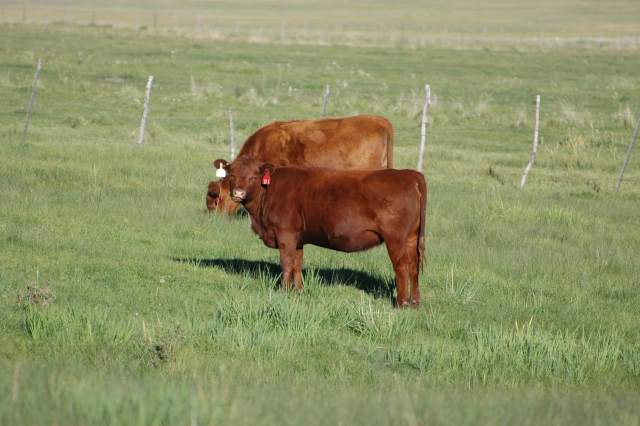June 8, 2016

“It is important in genetic management, as in all other management practices, to weigh the cost/gain balance of available tools,” say Alison Van Eenennaam of the University of California Davis (UCD) and Darrh Bullock, University of Kentucky (UK). “For every dollar invested you should expect at least an additional dollar in return.”
In the factsheet, Commercial Heifer Replacement Selection, you can find at eBEEF.org (more later), these two geneticists consider the complexities of determining the relative value of using genomic tests to increase the accuracy of selecting replacement heifers.
Van Eenennaam modeled the breakeven cost of testing all 45 potential replacement heifers born per 100 cows. The number of potential replacement heifer comes from assuming a 90% calf crop and that half of those calves are heifers, with a herd replacement rate of 20%.
“For this estimate it was assumed that the commercial producer was not basing heifer replacement decisions on performance records,” the researchers say.
Van Eenennaam developed a multiple-trait maternal selection index that includes maternal, pre-weaning performance, post-weaning performance, and carcass traits. Weaning rate—the number of calves weaned per cow exposed—represented the highest relative economic value in the index. Economic weightings assumed that the producer was retaining ownership through feeding and marketing the cattle on a value based grid.
Next, Van Eenennaam modeled a hypothetical DNA test with an intermediate accuracy (0.3).
Bottom line, the breakeven cost of testing replacement heifers with the hypothetical test was about $24 per head.
“Under current market conditions and technologies and in the absence of any other information, the value seems to be approximately $24 in retained ownership with replacement heifer operations, but closer to $10 in a market at weaning, retained heifer operation,” Van Eenennaam and Bullock explain.
Again, this is hypothetical, relative to a specific model and assumptions, but the methodology of arriving at a value bears pondering.
At the same time, Van Eenennaam and Bullock emphasize that genetic gain in herds is predominately driven by sire selection.
“Although it may seem intuitive to focus on female selection to drive fertility, bulls are where selection focus should lie,” Van Eenennaam and Bullock say. “That is because sires have a larger number of offspring per year (approximately 25-35) than females who typically have a single calf per year; 87.5% of genetic composition of the calf crop is determined by the sires used over the last three generations.”
The researchers also point out that heterosis continues to be a proven means of improving herd reproduction.
“Choosing the right management tools to make genetic improvement in the beef herd is critical to economic viability,” Van Eenennaam and Bullock say. “Taking advantage of heterosis, along with good sire selection decisions, are proven means of positioning the herd for profitability.”
The factsheet mentioned here is one of many insightful publications—along with a bevy of videos—you can find at eBEEF.org. The eBEEF team includes leading geneticists and genetic researchers from UC-Davis, UK, the University of Missouri, the University of Nebraska and Kansas State University.
You might also like:
Ranching operations personify environmental stewardship
When should you castrate your beef calves?
Projected lifetime returns: Bred heifers
5 essential steps for fly control on cattle
3 key production areas that contribute to ranch-level sustainability
What's the best breeding weight for beef heifers?
You May Also Like


.png?width=300&auto=webp&quality=80&disable=upscale)
